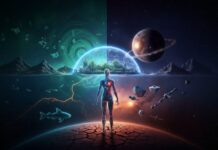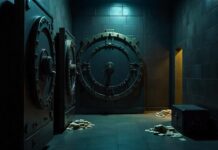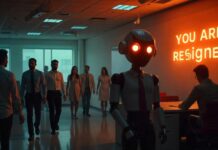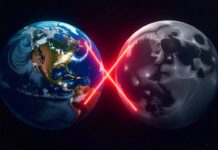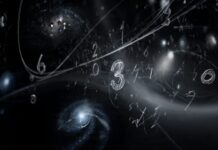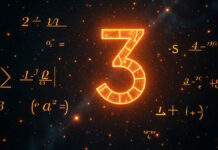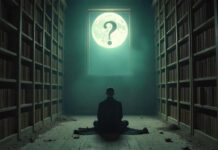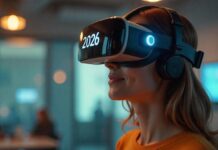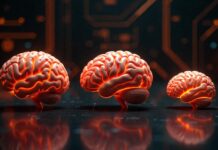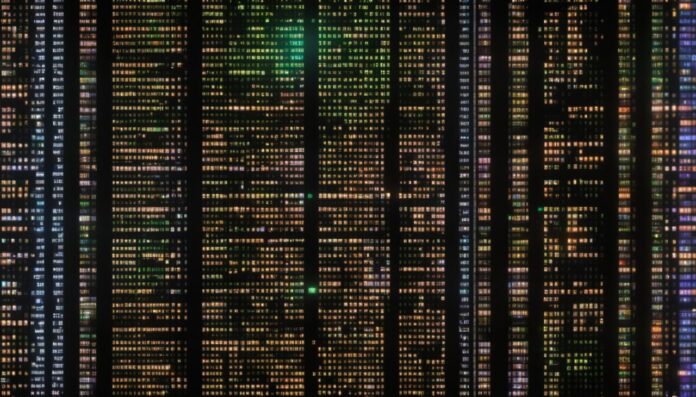
We’ve written a lot about simulation hypothesis and matrix on this platform. Heck, even the word “matrix” is in our name and URL.
Therefore this time, we wanted to prepare one of the most interesting topics in this category – the simulation glitches.
Those are the glitches or anomalies in the real world that might indicate a simulated world in one way or another.
Many people experienced some kind of glitches, bugs, or malfunctions throughout their lives.
If you’re one of those, or if you just want to find out more about this amazing world of simulation glitches – join us in this article.
Let’s go…
Interesting fact: The term "simulation theory" was popularized by philosopher Nick Bostrom in his 2003 paper "Are You Living in a Computer Simulation?"
The Mandela Effect

The Mandela Effect is a phenomenon where a group of people remember an event or fact differently than it actually occurred. This phenomenon is named after the false memory of many people believing that Nelson Mandela died in prison in the 1980s, when in fact he was released in 1990 and passed away in 2013.
One of the most well-known examples of the Mandela Effect is a false memory that the children’s book series is spelled “BerenstEin Bears” instead of “BerenstAin Bears.”
This false memory is shared by many people, leading to debates and discussions about alternate realities and the possibility of time travel.
Interesting fact: The Mandela Effect was first coined by paranormal enthusiast Fiona Broome in 2010 after she discovered that many people shared her false memory of Nelson Mandela's death.
The Mandela Effect is not limited to historical events or facts. It also affects popular culture, with many people having false memories of movie quotes, song lyrics, and even the appearance of famous logos.
One example is the false memory that Darth Vader says “Luke, I am your father” in the movie Star Wars: The Empire Strikes Back.
In reality, the line is “No, I am your father.“
Another example is the false memory that the Kit Kat logo includes a hyphen between “Kit” and “Kat,” when in fact it never has.
Fibonacci Sequence

The Fibonacci sequence is a series of numbers in which each number is the sum of the two preceding numbers. This sequence has been found in various natural phenomena, such as the spiral patterns in seashells and the arrangement of leaves on a stem.
Some theorists believe that the presence of the Fibonacci sequence in nature is evidence that we are living in a simulated reality.
Interesting fact: The Fibonacci sequence was first introduced to the Western world by Leonardo of Pisa, an Italian mathematician, in his book Liber Abaci.
Synchronicity
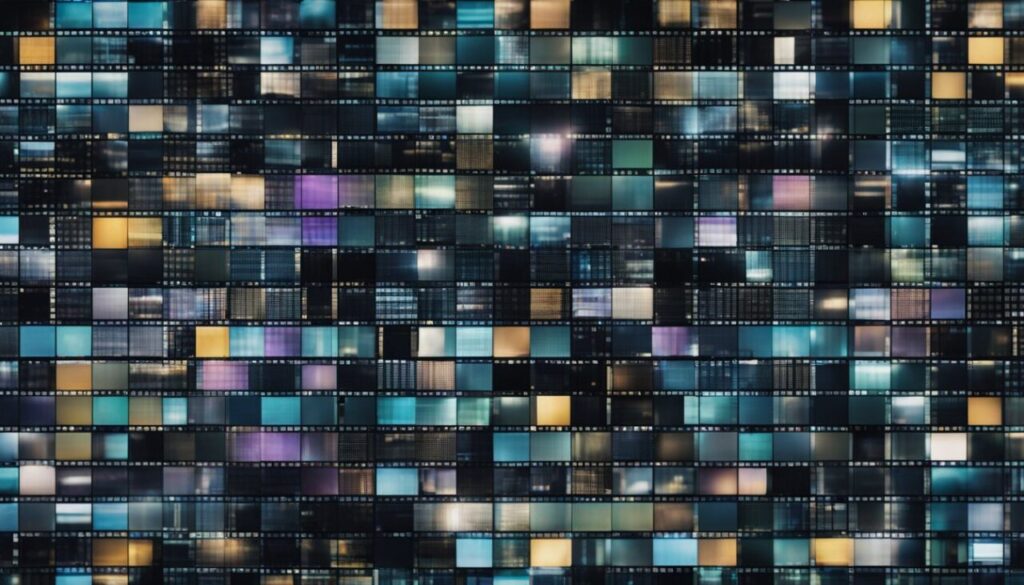
Synchronicity refers to the occurrence of two or more events that appear to be meaningfully related but have no causal connection. According to some proponents of the simulation theory, synchronicities are evidence that we are living in a simulation.
They argue that synchronicities are the result of the simulation’s programming, which is designed to create meaningful coincidences to guide us along our paths.
Here are two examples:
- Unexplained Objects or Events Appearing: Imagine you’re in a room alone, and suddenly, an object appears out of nowhere—a pen, for instance, that wasn’t there moments ago. This could be perceived as a glitch in the simulation where an item’s appearance doesn’t align with the normal laws of physics or expected environment changes. It’s as if the simulation momentarily inserted an object without following the usual rules of causality.
- Seeing the Same Person in Different Places Simultaneously: You see someone who looks identical to a friend or family member in two different locations at the same time. For instance, you observe your best friend walking down the street while simultaneously seeing them in a store across town. This could suggest a glitch where the simulation momentarily duplicates entities, creating a surreal experience of encountering the same individual in multiple places simultaneously.
Interesting fact: The concept of synchronicity was first introduced by Swiss psychiatrist Carl Jung in the 1920s.
Another example of synchronicity is the phenomenon of “dream synchronicity,” in which two or more people have the same or similar dreams on the same night.
Advocates for the simulation theory argue that this is evidence of the simulation’s programming, which is designed to create shared experiences among the simulated beings.
Quantum Mechanics

Quantum mechanics is the branch of physics that studies the behavior of particles at the quantum level.
It describes the strange and counterintuitive behavior of particles, such as entanglement and superposition.
In a simulated universe, these behaviors could be seen as evidence of the potential underlying code or rules that govern the universe.
One of the most famous experiments in quantum mechanics is the double-slit experiment.
Many people heard about that one.
This experiment shows that particles can behave like waves and interfere with each other, creating an interference pattern. This strange behavior has been interpreted as evidence of the wave-particle duality of particles.
Another strange phenomenon in quantum mechanics is entanglement. When two particles are entangled, they become connected in a way that defies classical physics.
Changes to one particle are instantly reflected in the other, even if they are far apart. This behavior has been described as “spooky action at a distance.”
People see entanglement as potential proof for simulation theory for several reasons:
- Information Transfer Across Distances:
- In a classical understanding of the universe, information transfer is limited by the speed of light. However, entanglement appears to allow instant information transfer between entangled particles. If the universe were a simulation, such constraints might not apply, as the underlying computational framework could allow for instantaneous updates across any distance.
- Non-Locality:
- The non-local nature of entanglement (where the state of one particle instantly influences the state of another) challenges our understanding of space and time. In a simulated universe, the concept of distance might be an illusion, and what we perceive as vast distances could be mere constructs within a computational system where everything is interconnected at a fundamental level.
- Complex Information Handling:
- Entanglement involves complex correlations and information handling that seem to surpass our classical computing capabilities. This complexity could be seen as indicative of an underlying sophisticated computational process, as might be expected in a high-level simulation.
- Resolution of Paradoxes:
- Quantum mechanics is filled with paradoxes and phenomena that defy classical logic. Some proponents of simulation theory argue that these oddities make more sense if the universe operates on a set of underlying rules designed by a higher intelligence, similar to how video games can have peculiar mechanics that don’t align with real-world physics.
- Holographic Principle and Digital Reality:
- The holographic principle suggests that the entire universe can be described by information encoded on a boundary to the universe. This has parallels to how data is stored and processed in computer simulations. If our reality is similarly encoded, entanglement could be a natural consequence of this information processing model.
- Efficiency in Information Processing:
- In a simulated environment, efficiency of information processing is crucial. Entanglement could be seen as a way to streamline the exchange of information and maintain coherence in the simulation without the need for slower, classical communication methods.
- Analogies to Software Constructs:
- Entanglement could be likened to how variables in a software program can be instantaneously updated and interlinked regardless of their “location” within the code. In this view, entangled particles are like interconnected data points in a vast computational network.
Basically, in physics, and especially advanced physics – there are many theories that could be linked somehow with simulation hypothesis.
Moreover, if that day ever comes, the discovery of whether we live in a simulation will most likely be made by a group of ultra-smart physicists.
Bizarre Optical Illusions

Optical illusions are visual phenomena that trick our brains into perceiving something that isn’t actually there. These illusions can range from simple tricks of perspective to mind-bending distortions of reality.
We’ve all seen those.
Proponents of the simulation hypothesis argue that such misinterpretations could be indicative of flaws or shortcuts in the rendering process of a simulated environment.
Just as video games can exhibit graphical glitches, these optical anomalies might be seen as evidence of the underlying computational nature of our universe.
By studying optical illusions, researchers hope to uncover more about the fundamental mechanisms that govern our perception and potentially point to the existence of a simulated reality.
Interesting fact: Instances, where entire groups of people see optical illusions or impossible objects, might suggest a malfunction in the rendering of visual data in the simulation.
Uncanny Doppelgängers
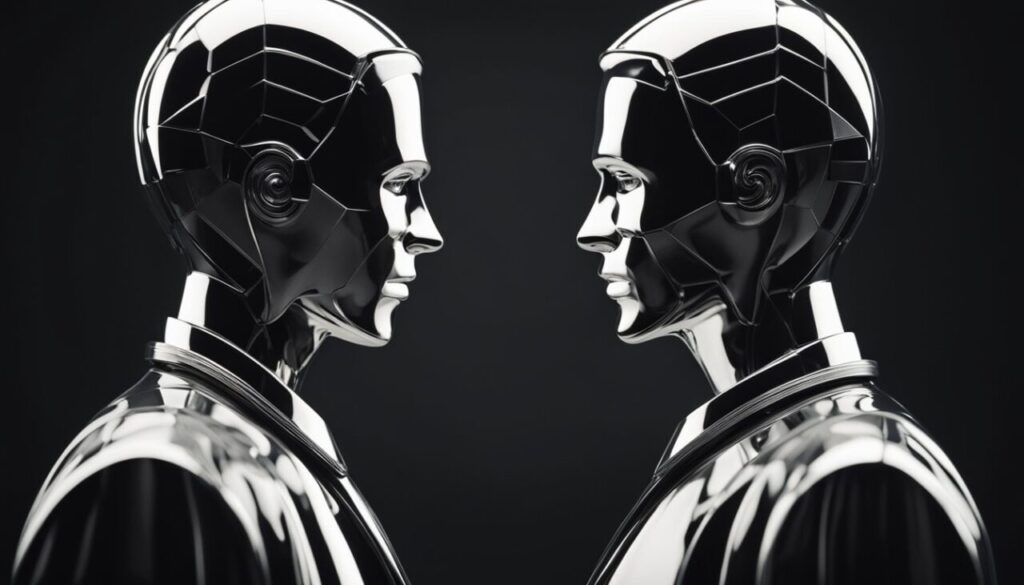
One of the most intriguing anomalies that might suggest the possibility of a simulated reality is the phenomenon of uncanny doppelgängers.
These are encounters with people who look exactly like someone else, or with one’s own doppelgänger.
Such occurrences have been reported throughout history, and they often leave people feeling unsettled and questioning the nature of their reality.
Could it be that these doppelgängers are glitches in the simulation, errors in the generation of unique avatars within the program?
While there is no concrete evidence to support this theory, the sheer number of reported cases suggests that there may be something more to this phenomenon than mere coincidence.
Interesting fact: The term "doppelgänger" comes from the German words "doppel," meaning double, and "gänger," meaning walker or goer. It is used to refer to a double or look-alike of a living person, often considered a harbinger of bad luck or an omen of death.
Sudden Memory Overwrites

Sudden memory overwrites occur when an individual’s memories of past events are suddenly altered without any explanation.
This can be a very disorienting experience, as it can be difficult to determine what is real and what is not.
In some cases, people may even remember events that never actually occurred.
One possible explanation for sudden memory overwrites is that they are a result of glitches in the simulation.
If the simulation is not functioning properly, it could cause errors in the storage and retrieval of memories, leading to sudden changes in personal recollections.
Interestingly, sudden memory overwrites have been reported by individuals from all walks of life, including those who have never experienced any other anomalies or glitches.
This suggests that they may be a common occurrence in the simulation.
Unexplained Repeating Numbers

Another anomaly that some people believe supports the simulation theory is the occurrence of unexplained repeating numbers.
This phenomenon involves seeing specific sequences of numbers, such as 11:11 or 1234, repeatedly in various places, such as clocks, license plates, and receipts.
Some individuals interpret these repeating numbers as a sign of the underlying code or patterns in the simulation trying to make itself known.
While there may be no scientific explanation for this phenomenon, it remains a topic of interest and speculation for simulation theory proponents.
Out-of-Place Artifacts (OOPArts)

Out-of-Place Artifacts (OOPArts) are objects that have been discovered in geological layers or locations where they shouldn’t logically exist.
These objects are seen by some as evidence of errors or anomalies in the simulation’s historical data consistency.
Some examples of OOPArts include ancient tools, advanced technology found in ancient ruins, and even human footprints found alongside dinosaur tracks.
One of the most famous OOPArts is the Antikythera mechanism, a complex geared device that was discovered in the wreckage of an ancient Greek ship.
The mechanism is believed to have been used for astronomical and calendrical purposes and is considered to be one of the earliest examples of a complex geared mechanism.
Another example of an OOPArt is the Baghdad Battery, a set of three artifacts discovered in Iraq that date back to the Parthian or Sassanid periods.
The artifacts consist of a clay jar, a copper cylinder, and an iron rod. When filled with an acidic liquid, the artifacts are believed to have functioned as a primitive battery.
Reality Bubbles

Reality bubbles are areas within the simulation where the rules of the simulation seem to operate differently.
These bubbles can range from small, localized glitches to large-scale anomalies that affect entire regions.
Some examples of reality bubbles include areas where gravity appears weaker or stronger than it should be, places where time moves at a different pace, and regions where electronic devices malfunction without any clear reason.
These localized anomalies could suggest inconsistencies or errors in how the simulation is rendered in different regions.
It’s possible that the simulation is programmed to prioritize certain areas over others, leading to these discrepancies.
Interesting fact: A group of physicists discovered a region in the universe where the laws of physics seem to be different than they are elsewhere. This region, known as the "Cold Spot," is a large, anomalous area in the cosmic microwave background radiation. Its existence has yet to be fully explained by scientists.
Conclusion

After exploring the top 10 anomalies and glitches that might prove simulation theory, it’s clear that there are many strange occurrences that cannot be easily explained.
While some may say that these anomalies are simply coincidences or errors in perception, others believe that they provide evidence of a simulated reality.
For now, it is impossible to prove simulation theory in one way or another however those anomalies and glitches certainly spark the imagination of people around the world.
As technology continues to advance and we gain a better understanding of the universe, it’s possible that we may someday be able to definitively answer the question of whether or not we are living in a simulation.
Until then, we continue to explore our curiosity.

